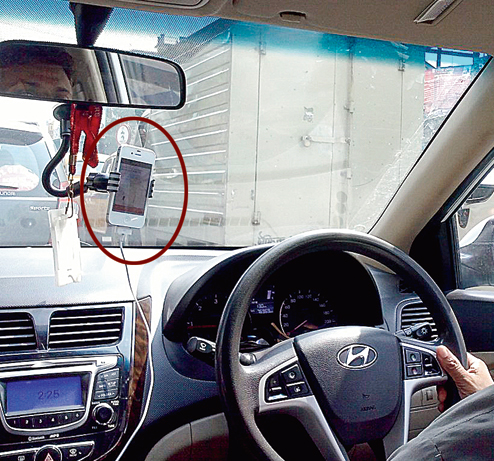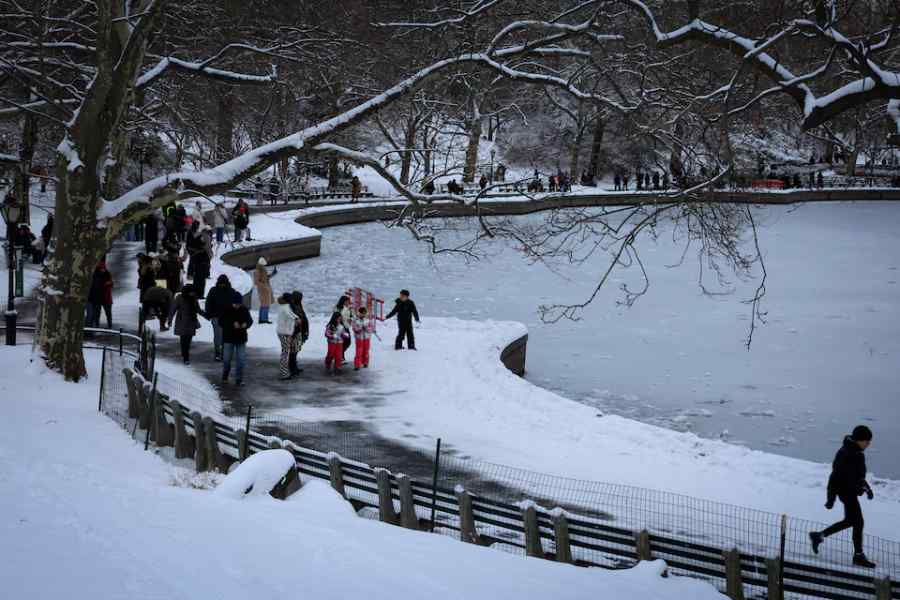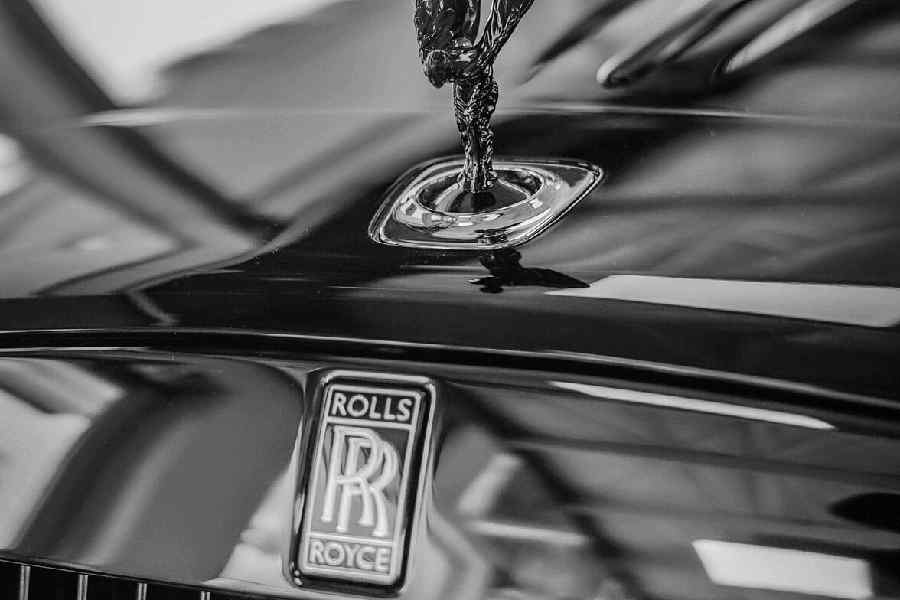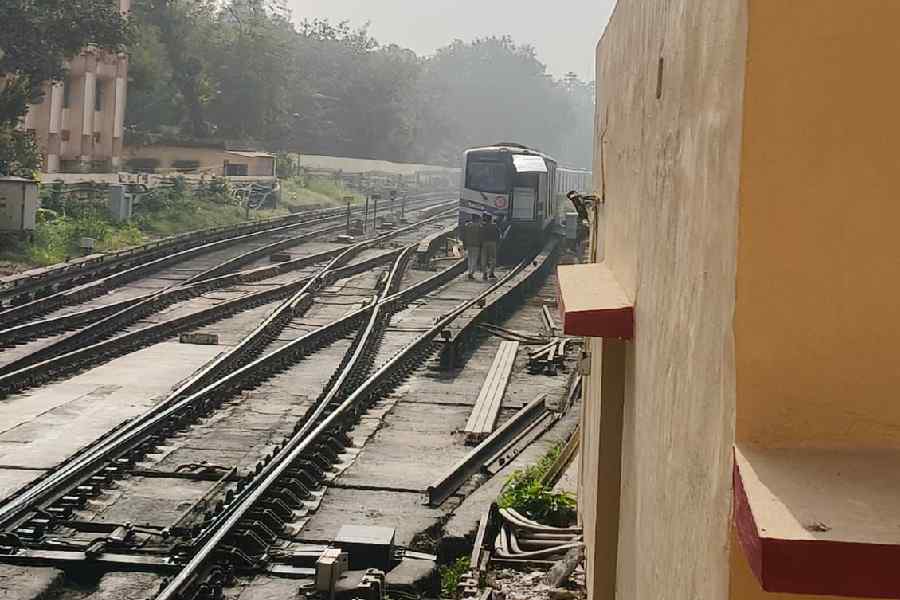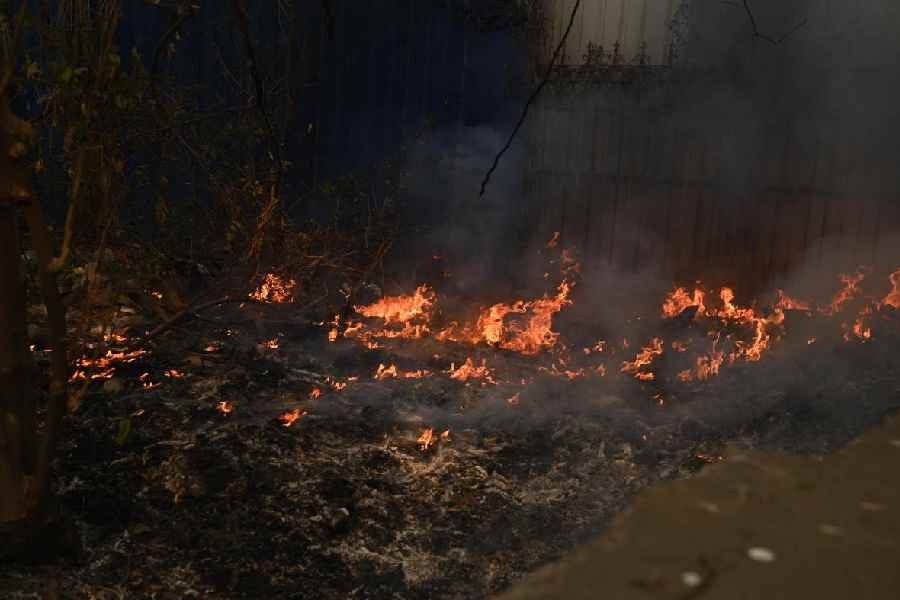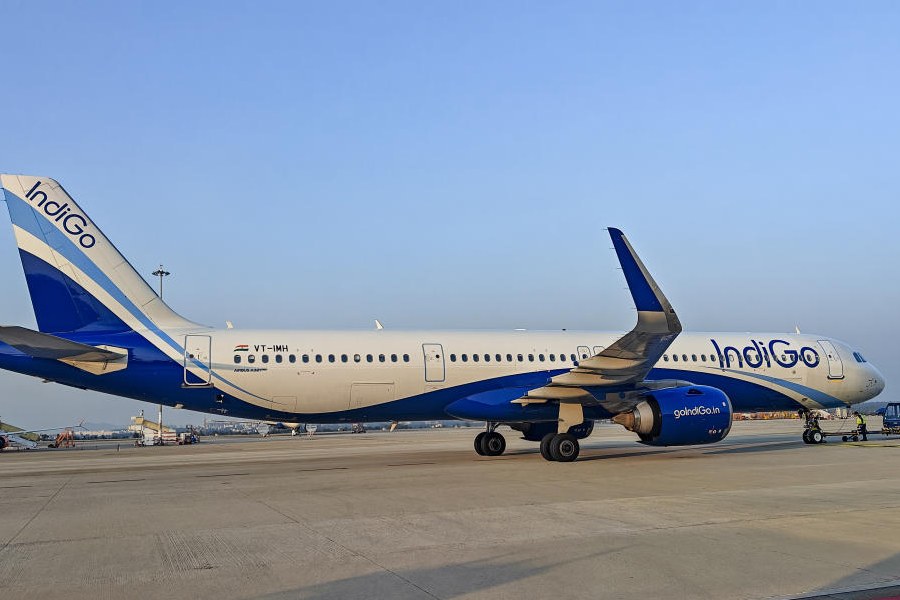 |
| An Uber car with its signature iPhone |
Uber is growing faster in Calcutta than it did anywhere else in India, reflecting not so much the commuter’s preference for novelty as the paucity of reliable transport options in the city.
The San Francisco-based technology company, whose GPS-based app allows users to hire cars at the press of a smartphone button, launched in the city last week.
“The response has been phenomenal. On any given day, the number of people downloading and using our app in Calcutta is more than the number in Mumbai. In fact, the number of Uber users in Calcutta is more than that in any other Indian city a week after the launch,” said Neeraj Singhal, head of expansion at Uber India.
Uber services are currently available in 10 Indian cities. The company came to Calcutta, Jaipur, Ahmedabad and Chandigarh simultaneously almost a year after starting its India operations in Bangalore. Delhi, Mumbai, Chennai, Hyderabad and Pune are the other Indian cities that have Uber.
Calcutta’s response has made Singhal “wish Uber was here earlier”.
While commuters across the globe choose Uber because of the promise of “a seamless experience” that precludes the need to haggle with drivers over distance or fare, Calcutta hardly has an option.
Apart from the often unreliable and rude regular taxi fleet, struggling to make ends meet, there is only one radio cab company operating in the city: Mega Cabs, which seems to ply only to the airport. For an office-goer who wants a more comfortable commute than the public transport network can offer, the only remaining alternative is renting an AC car on half-day or full-day basis, which would cost upwards of Rs 400.
Singhal might wish that Uber had come to the city earlier but the company could not have timed its entry better. Its launch last week had coincided with protests by taxi drivers against steep fines for passenger refusal. The first Uber cab rolled out the morning after taxis went off the roads for the fourth time in 10 days.
While Uber couldn’t be happier with the response, this success hides a transport failure just as Bengal’s “power-surplus” status reveals a lack of industrial demand.
Mumbai has more than half-a-dozen radio cab services, including Olacabs, Meru, EasyCabs, Mega Cabs and Priyadarshini, which has only woman drivers.
Hyderabad, where three categories of cars can be booked through Uber, also has more than six radio cab services, including Meru, Orange Cabs, Dot Cabs and women-only She Cabs.
The gap in the market is apparent to the visiting Uber chief. “I guess there is relief that an alternative option of transportation has arrived in the city,” Singhal said.
Several Uber drivers whom Metro spoke to said their passengers were mostly office workers and morning walkers headed for parks and other green zones away from their homes. Uber users from other cities visiting Calcutta have also contributed to the numbers. “I have been out early for airport drops, and during the morning and evening peak hours. I have been getting a lot of pickup requests from office workers,” said an Uber driver.
Homemaker Debalina Hazra, who lives in Jadavpur, said: “My husband drives to office, so I don’t have access to the car for the better part of the week. I used to postpone going out till the weekend, but now that Uber is here I have started doing so on a weekday. Uber is less expensive than hiring a car for a fixed period and also paying for parking.”
According to Singhal, Uber’s focus is on reliability. “If senior citizens earlier found it difficult to move around in the city, with us here they actually have an option that works.”
Uber offers features like “Share my ETA” so that someone travelling at night can share his or her cab number, route and the driver’s name with family and friends to keep track in realtime. “This is a very popular feature in Delhi,” Singhal said.
Making enough cars available to meet the demand has proved the biggest challenge for Uber. “Estimated times of arrival (ETAs) will have to improve and the maps functionality will have to improve (read: drivers will have to get used to reading maps),” Singhal said.
Typically, Uber-registered cabs on hire compete on ETAs to get to a passenger pressing the “Request pickup here” button. As opposed to the yellow cabs that can (or cannot) be hailed with the wave of a hand or radio taxis that have to be reached over phone, Uber is all about understated convenience. What sets it apart is the ease with which cabs can be located once you are logged in.
“As we add more and more vehicles, the average ETA will go down to under 10 minutes, as it has in other Indian cities,” Singhal promised.
In San Francisco, Uber’s parent state in the US, the average ETA is two minutes. But in price-sensitive Calcutta, where value for money translates into shosta (cheap), it is Uber’s introductory offer that has bowled over many.
For a base fare of Rs 40, Rs 12 per km and Re 1 per minute, what commuters get is a safe ride in air-conditioned comfort at a reasonable premium.
While a yellow cab — most likely a poorly maintained one — would charge a metered fare of around Rs 100 for a ride from Ballygunge Phari to Esplanade around noon, Uber pinched us by another Rs 68 for a 6.49km test ride that took 50 minutes and 20 seconds.
“The Calcutta price is a set price, not a promotional one. We will revise it later; it could go up or down,” Singhal said.
how smooth is the ride?
While Uber in the West is positioned as a luxury brand and was launched as the “Merc on call”, we have not seen many luxury vehicles here...
While we supply E-Class in London, in Delhi it’s the Camry and in Calcutta the Verna. Providing luxury is not our objective, offering reliable rides is. We are in 170 cities and we cannot provide classy rides everywhere. But we try to ensure VIP treatment for our riders even if we can’t give them luxe wheels. We are teaching our drivers all the etiquette. We are trying to keep newspapers and mineral water bottles in all cars. The riders will have their doors opened, the temperatures inside the vehicle suited to their comfort — a pleasant ride.
How do you ensure drivers follow your training?
Uber ensures driver compliance through its rating system where at the end of a ride, the rider is asked to rate the driver. Any driver who gets a rating below three stars for three consecutive days is automatically marked and taken aside. And when a rider rates a driver below three stars, a comment box pops up where the guest can write his grievance. Our community management team then follows up on it. The rider is also rated by the driver.
You do not allow pre-booking. Isn’t that a serious handicap?
We do not believe in pre-booking, it shows a genuine inefficiency in managing your inventories.
But is a commuter assured of an Uber cab at three in the morning?
That is where we are trying to arrive and will do it soon.
With the RBI mandating two-step verification for card-not-present transactions at POP, what will be your response? Will you offer alternative modes of payment? Like Mobilewallet?
I am not authorised to comment on that. Uber’s USP is our offer of seamless travel with the rider walking away after arriving at his destination. It is based on the payment option through credit card where the company emails a receipt to the rider’s smartphone while automatically deducting the fare from his/her credit card account. We have recently committed that we are indeed considering other modes of payment but right now
I cannot comment on that.
Given the level of credit card fraud in our country, how do you offer transaction security to customers?
Our transactions are safe. We have secured third-party payment processes. There hasn’t been a single case of fraudulent transaction since we started operating (Uber operates in 45 countries).
Don’t you think that as a technology-driven company you have rather limited expansion possibilities in a country like India that has limited credit card and smartphone penetration?
We are not restrained by that. There are 18 million credit card holders in India and we are overwhelmed by the response here. Smartphones, credit card payments are not a roadblock for us. India is the second largest country, apart from the US, in terms of our expansion and presence.
You are facing protests and litigation in almost every country you are present in. Here too you have private cab rental companies complaining against your mode of transactions to the RBI. How do you deal with such a lot of opposition?
We embrace it. At one point of time we were facing protests in two countries in the EU, in Germany and South Korea. London cabbies were protesting. It just shows how technology can really challenge and change the way one operates.

